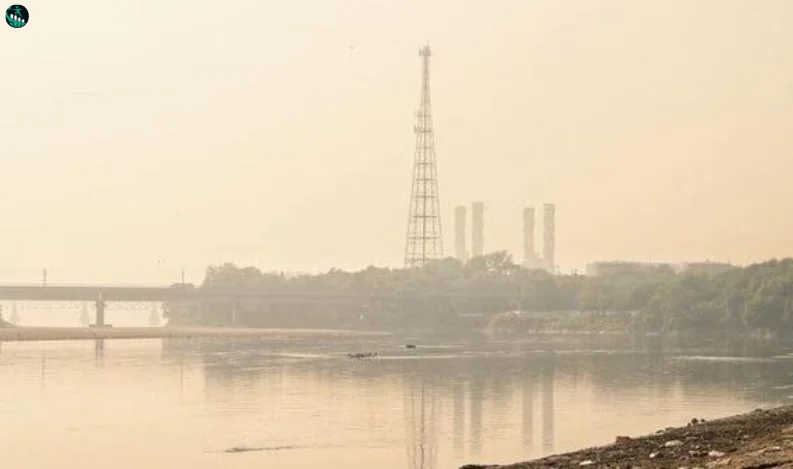
Delhi AQI Today: Pollution Subsides as Air Quality Drops to 283 – See How the National Capital Compares to Other Cities
Delhi’s air quality witnessed a slight improvement today, with the Air Quality Index (AQI) dropping to 283, indicating a decline in pollution levels. While the current AQI still falls under the “poor” category, the subsiding pollution levels are a relief for residents, who have been battling rising pollution over the past few weeks. The national capital’s AQI of 283 reflects a gradual reduction in harmful particulate matter in the air, but the city still has a long way to go before air quality reaches healthy levels.
How Delhi’s AQI Compares to Other Major Cities
As Delhi continues to struggle with poor air quality, other major Indian cities have also been grappling with pollution, though with varying AQI levels. Here's a comparison of Delhi’s AQI with other prominent cities across India:
-
Mumbai: AQI in Mumbai stands at 165, which is categorized as “moderate.” The coastal city typically experiences better air quality compared to Delhi, although seasonal changes can lead to fluctuations.
-
Kolkata: With an AQI of 195, Kolkata falls under the “moderate” category. Despite higher humidity levels, pollution spikes are common in the city, especially during winters.
-
Bangalore: Known for its relatively better air quality, Bangalore reported an AQI of 85 today, which is classified as “satisfactory.” The city’s lush green cover and favorable weather conditions contribute to its cleaner air.
-
Chennai: Chennai's AQI stands at 110, also falling under the “moderate” category. The city’s air quality tends to stay in this range, although construction activity and traffic congestion can lead to temporary spikes in pollution.
-
Hyderabad: Hyderabad reported an AQI of 140, falling in the "moderate" category, similar to Mumbai and Kolkata. The city's air quality is influenced by vehicle emissions and industrial activity.
What Does an AQI of 283 Mean for Delhi?
An AQI of 283 falls under the “poor” category, meaning that prolonged exposure to the air can lead to health complications, particularly for vulnerable groups such as children, the elderly, and individuals with pre-existing respiratory conditions. Residents are advised to limit outdoor activities, especially during early mornings and evenings when pollution levels tend to spike.
Authorities in Delhi have already taken various measures to combat the rising pollution, including enforcing restrictions on vehicular emissions and banning construction activities that contribute to dust pollution. However, experts believe that more long-term solutions are required to address the city’s chronic air quality issues.
Causes of Delhi’s Air Pollution
Delhi’s air quality worsens each year during the winter months due to several factors:
-
Stubble Burning: Crop residue burning in neighboring states like Punjab and Haryana significantly contributes to Delhi’s pollution crisis, as smoke drifts into the city.
-
Vehicular Emissions: Delhi’s large population and traffic congestion result in high levels of vehicular emissions, a major source of particulate matter and nitrogen oxides.
-
Construction Dust: Ongoing construction activities across the city produce large amounts of dust, further deteriorating air quality.
-
Weather Conditions: During winter, Delhi experiences temperature inversions, where cool air gets trapped close to the surface, preventing pollutants from dispersing.
Steps Residents Can Take
To safeguard their health, residents of Delhi are encouraged to take the following steps:
-
Use Air Purifiers: Investing in indoor air purifiers can help reduce exposure to harmful pollutants within homes and offices.
-
Wear Masks: N95 masks can provide protection against inhaling particulate matter, especially during outdoor activities.
-
Monitor Air Quality: Keep track of the AQI using mobile apps or government websites and plan outdoor activities accordingly.
-
Stay Indoors: On days when the AQI reaches hazardous levels, it’s advisable to stay indoors as much as possible, particularly for children and the elderly.
Conclusion
While Delhi’s AQI has improved slightly to 283, the city still faces a significant air pollution challenge. Comparatively, cities like Bangalore and Chennai are faring much better in terms of air quality, though seasonal changes may cause temporary spikes in pollution across the country. As winter approaches, it will be crucial for both the government and citizens to take proactive steps to improve air quality and protect public health.



Recent Comments: